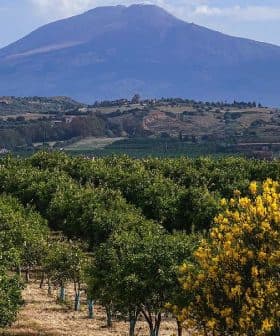An Estimated 33,000 Jobs Lost to Xylella Fastidiosa in Puglia
Agricultural officials in Puglia, Italy are warning that the threat of Xylella fastidiosa to the region’s socio-economic wellbeing is being underestimated, with thousands of olive groves destroyed and 33,000 jobs lost. The spread of the disease, exacerbated by the high population of meadow spittlebugs and susceptible olive cultivars, has led to the need for a significant investment of €3.3 billion to restore the affected areas, far beyond the current investment of €300 million.
Last month, three agricultural officials from the southern Italian region of Puglia warned that the threat to the socio-economic wellbeing of the area from Xyellela fastidiosa is being underestimated.
“On Xylella fastidiosa, there is still a tremendous underestimation of the problem because, obviously, we do not want to grasp the drama of the economic and social damage that the phenomenon produces,” read a joint statement from the presidents of Confagricoltura Puglia, Confagricoltura Brindisi and Confagricoltura Lecce, Luca Lazzàro, Antonello Brun and Maurizio Cezzi.
See Also:Puglia Warns Farmers of Ineffective Xylella Fastidiosa CuresXylella fastidiosa was first detected in Italy in 2013. Since then, it has spread across the Mediterranean region. In Puglia, a subspecies of Xylella fastidiosa, pauca strain De Donno, is responsible for causing a severe disease leading to the death and destruction of thousands of olive groves.
The disease caused by the De Donno subspecies of Xylella fastidiosa has spread rapidly over the years due to the high population of Philaenus spumarius, commonly known as meadow spittlebug, a xylem sap feeder and primary vector of the bacterium in the region.
Additionally, the extensive planting of two susceptible olive cultivars – Ogliarola salentina and Cellina di Nardò – and the high density of olive trees in the region infected with Xylella fastidiosa has aggravated the problem further.
“The first official report of outbreaks dates back to October 2013, in Gallipoli and Alezio in the Lecce area,” the joint statement read. “In eight years, Xylella has spread and, to date, has affected about 150,000 hectares of olive groves in the provinces of Lecce, Brindisi and part of Tarantino.”
Considering the average number of working hours that olive trees require to maintain and harvest, about 33,000 jobs have been lost, the three officials said.
“At this point, to restore these places and the olive-growing potential that was destroyed, the state and the Apulian region should invest €3.3 billion, while only €300 million have been invested,” the joint statement read. “This latter sum is not enough.”









